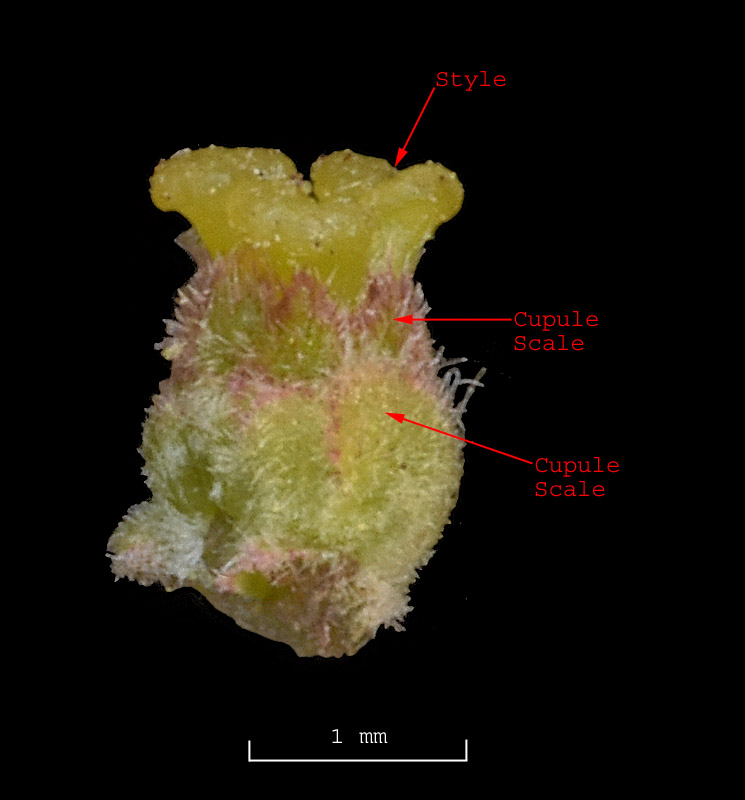
Bur Oak
Quercus macrocarpa

Bur Oak
Pistillate Flower, Side B
Intersection Highways #9 and #247
27-May-2020
Each pistillate flower is enclosed in a scaly, cup-like involucre called a cupule and each pistillate flower contains three styles. The cupule is derived from inflorescence axes as described in this excerpt from an article by Alastair D. Macdonald:
Each female flower of Quercus macrocarpa terminates a second-order inflorescence axis and is surrounded by a continuous cupule. The cupule first forms as two primordia in the axils of each of the two transversal second-order bracts. These cupular primordia represent third-order inflorescence branches. The cupule primordia become continuous about the pedicel by meristem extension.
Macdonald, A. D. (2011). Inception of the cupule of Quercus macrocarpa and Fagus grandifolia. Canadian Journal of Botany, 57(17), 1777-1782
Fagaceae: Answers to key questions in Budd's Flora leading to this family.
|